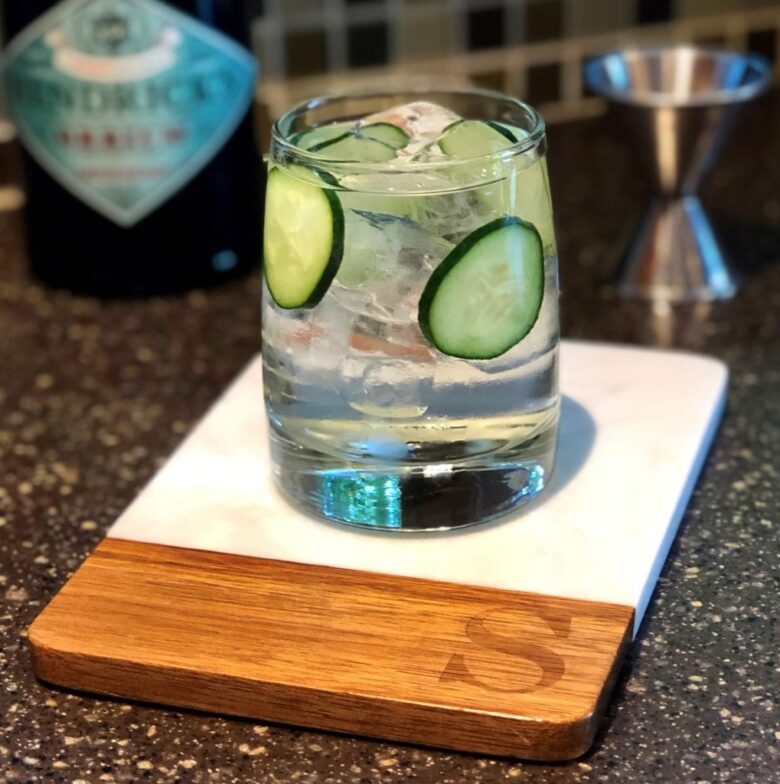A cold gin and tonic is one of summer’s pleasures, as you sit on your porch or patio, enjoying the sunshine. But the G&T has a rich and old history that begins in Ancient Greece and becomes the drink we know today thanks to the Royal British Navy.

Gin is a very old spirit, and likely has roots all the way back to Greece. In 70 A.D. the Greek Physician Pedanius Dioscorides includes a description of juniper berries being steeped in wine to combat chest ailments. And in 1055 the Benedictine Monks of Solerno, Italy include a recipe of wine infused with juniper berries in their “Compendium Solernita”. Gin gets its name from the Dutch word for Juniper, which is ‘Genever’, and a 13th century Flemish manuscript references the distilled ‘genever’ for the first time. By the 1600s it was being produced by hundreds of distillers in the city of Amsterdam alone. Originally genever was, like most spirits, created as a medicine, although it was not lost on them that it had other affects that people enjoyed, or found useful. It gained popularity during the Thirty Year’s War, a Protestant and Catholic religious war based primarily in central Europe from 1618-1648. The British were surprised at the ferocity of the Dutch soldiers, resulting from drinking “Dutch Courage” prior to battle, and became interested enough that they began drinking a little “courage” as well before battle.

In 1689 William of Orange becomes King William III of England, Ireland, and Scotland, and brings genever along with him to England from Holland. He then places a blockade and heavy tariffs on French wine and cognac to punish the French, and then institutes the Corn Laws in England, effectively giving the English the green light to distill all the gin they want. This results in a period in England called the ‘Gin Craze’, where a pint of gin was cheaper than a pint of ale. This, not surprisingly, lead to a five-year alcoholic craze, especially with the poorer citizens, and a dramatic rise in deaths from poor or dangerous distillation practices from anyone who wanted to make a quick pound. By 1720 it is estimated that a quarter of the households in London were making their own gin.
In 1830, a new distillation process was invented by Aeneas Coffey, and revolutionized the way gin was distilled, making it cleaner and purer. But the real boost came when the British Royal Navy began stocking the ships with gin, rather than beer when they took governance of India and the Navy (and British citizens) headed to the warmer climates around the Indian Ocean. The heat wreaked havoc on beer being stored in barrels, spoiling the beverage, but had no effect on gin. These warmer parts of the globe also introduced the sailors to malaria, which was treated with the awful tasting quinine powder. The drink company Schweppes came out with ‘Indian Tonic Water’ in 1858 to be used by the Navy, making the ingesting of the powder more palatable. Of course, the two liquids were combined by the sailors, along with limes to fight scurvy, and you have the first Gin and Tonic.

The Perfect Gin and Tonic recipe:
- Get your favorite glass
- Add your favorite gin (2oz)
- Add ice
- Add tonic water
- Add your garnish
- Drink up!
Honestly – you cannot make a bad gin and tonic unless you don’t like the drink in the first place. But there are some ways to make it better.
- Don’t use a glass that is too large. A big G&T will water down and lose its bubbles, so you end up with a big glass of watery gin and lime.
- Use cold tonic water. Cold liquids hold bubbles longer.
- Build it in the glass. Gin first, then ice, and tonic last. The sugar in the tonic water make it heavier than the gin and will mix itself on the way down. And by not stirring, you save even more bubbles.
- In my opinion – juniper-forward London Dry gins want lime. Botanical gins can go a lot of different directions. Hendricks, for instance, is wonderful with a cucumber slice or three in the drink as a garish.
Enjoy!

Next: The Mint Julep



